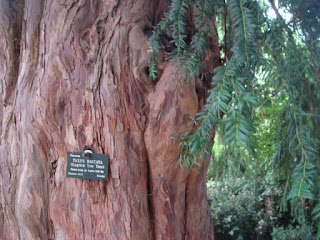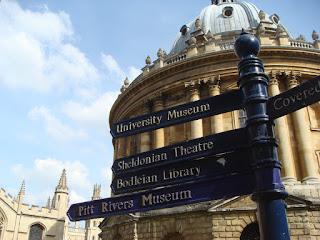
Magpie on the lookout as we walk to morning lectures in the Examination Schools, a huge Victorian-era building where students from all colleges come, formally gowned (wearing subfusc), to take final examinations (schools) at the end of term.
Keeping to the period of Jefferson, Justine Hopkins lectured on British artists on the Grand Tour and on painting the English landscape. The young gentlement were sent abroad with a tutor [a bear handler!] to keep the experience academic! The GT experience encouraged painting epic/heroic scenes with classical literary references, antique elements.
Interestingly, the GT afforded only views of Roman copies of Greek statuary since Greece was under Turkish control during the first half of the 17th century & off limits. They brought home tons of swag until the first museum of antiquities opened in Rome in 1630. By the time of Jefferson, landscape painting was including elements of the exotic and the sublime, moving toward the Romantic Age.
And Richard Wilson traced the development of English gardens, a turning away from the formalized European model. Landscape design was consciously natural, picturesque, combining beauty pleasing to the imagination with strong literary allusions, harmony, and sublime vistas inspiring awe. The picturesque landscape has variety, movement, irregularity; it is nature framed. 18th century garden sculptural elements often contained a political message. Temple of the Worthies at Stowe salutes liberty, Whig values espousing democratic rather than devine right monarchy.
But before all this Food for Thought, I'd taken an early morning walk around Christ Church meadows along the Isis where rowers were diligently practicing and bullocks lowing.



Late afternoon treat was a tour of the Botanic Garden guided by the passionate conservator Louise.
The garden was established as a collection of specimen plants in 1621, the oldest in Britain, and the oldest tree in the place is this English yew, which according to Louise, is featuring in botanical applications for cancer treatments.
Tolkien, in what's reputed to be the last photo of the man, leans against his favorite tree in the garden, the ancient Austrian pine.
My favorite is Victoria cruziana, clearly known to Beatrix P!
The day closed with Evensong at Christ Church cathedral. Alice's daddy was dean. Here's his niche:
 Trumpet voluntaries in the chapel! A nice way to close out the week.
Trumpet voluntaries in the chapel! A nice way to close out the week.



























